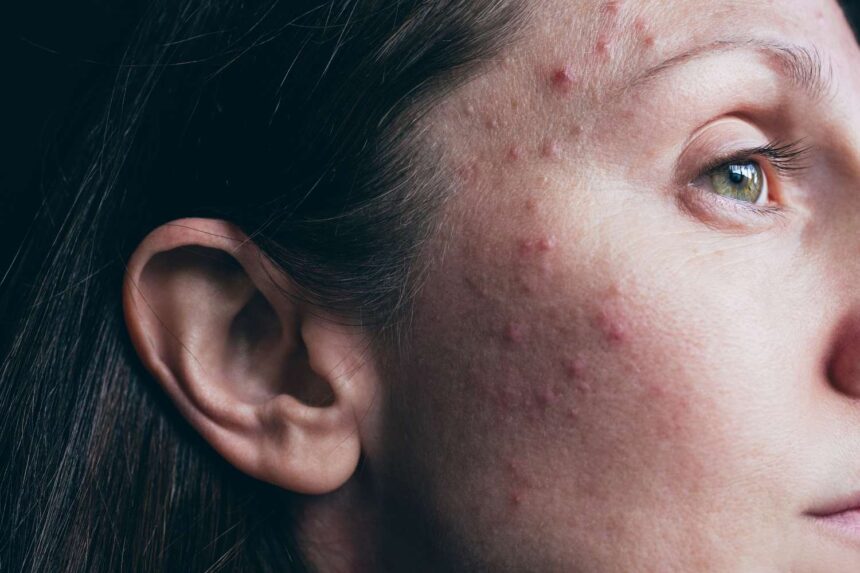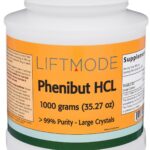Our skin, the largest organ of the body, acts as a protective barrier against the outside world.
But sometimes, this vital shield comes under attack, leading to a variety of skin conditions. These conditions can range from mild annoyances to chronic challenges, affecting everyone from newborns to adults.
This article explores some of the most common skin conditions, their symptoms, and treatment options.
8 Common Skin Conditions and Their Treatments: A Guide to Healthy Skin
1. Acne Vulgaris (Acne)
Probably the most recognisable skin condition, acne affects millions of people worldwide. It occurs when oil glands become clogged with dead skin cells and bacteria, leading to pimples, blackheads, and whiteheads, typically on the face, chest, and back.
- Symptoms: Whiteheads, blackheads, pimples, red bumps, cysts
- Treatment: Over-the-counter cleansers with salicylic acid or benzoyl peroxide can help mild acne. For moderate cases, a dermatologist might prescribe topical retinoids, antibiotics, or combination medications. In severe cases, oral medications or isotretinoin (Accutane) may be used.
2. Eczema (Atopic Dermatitis)
This chronic inflammatory skin condition causes dry, itchy, and irritated patches of skin. It’s particularly common in children but can affect adults as well. Eczema flares can be triggered by stress, irritants, and allergens.
- Symptoms: Dry, itchy, red, and inflamed patches of skin. Blisters may appear in severe cases.
- Treatment: There’s no cure for eczema, but treatments can manage symptoms. These include emollients (moisturisers), topical corticosteroids to reduce inflammation, and antihistamines to control itching. Phototherapy (light therapy) can be helpful for some people.
3. Crepey Neck
This condition causes the skin on the neck to appear thin, wrinkled, and loose, resembling crepe paper. It’s most common with age, sun damage, and rapid weight loss.
- Symptoms: Thin, wrinkled, and loose skin on the neck. It may feel fragile and delicate.
- Treatment: While no magic cream can completely eliminate crepey neck, some products can offer improvement.
Look for moisturisers rich in ingredients like hyaluronic acid, peptides, and retinol.
Consider consulting a dermatologist for laser treatments, radiofrequency treatments, injectables, or neck lift surgery depending on the severity and desired outcome.
4. Psoriasis
This chronic autoimmune condition causes rapid skin cell growth, leading to thick, red, scaly patches on the skin. Psoriasis can also affect the scalp, nails, and joints.
- Symptoms: Thick, red, silvery-white scaly plaques on the skin. An itching and burning sensation may occur.
- Treatment: Treatment options for psoriasis vary depending on the severity. Topical medications such as corticosteroids, retinoids, and vitamin D analogues are common first-line treatments. Phototherapy and oral medications that suppress the immune system can be used for more severe cases.
5. Rosacea
This chronic inflammatory skin condition primarily affects the face, causing redness, visible blood vessels, and bumps and pimples. It often flares up in response to triggers like sun exposure, spicy foods, and hot beverages.
- Symptoms: Facial redness, bumps and pimples, visible blood vessels, burning or stinging sensation.
- Treatment: There’s no cure for rosacea, but treatments can control symptoms. Topical medications like metronidazole, azelaic acid, and ivermectin are commonly used. Oral antibiotics and lasers can be helpful in some cases.
6. Hives (Urticaria)
These raised, itchy welts appear suddenly on the skin and can vary in size and shape. Hives can be caused by allergies, medications, infections, or even stress.
- Symptoms: Red, itchy welts that appear suddenly and can change location quickly.
- Treatment: Antihistamines are the mainstay of treatment for hives. In severe cases, corticosteroids or immunosuppressants may be prescribed.
7. Shingles (Herpes Zoster)
This painful blistering rash develops along a nerve pathway, typically on one side of the face or torso. It’s caused by the reactivation of the varicella-zoster virus, the same virus that causes chickenpox.
- Symptoms: Pain, burning, tingling, and a blistering rash along a nerve pathway.
- Treatment: Antiviral medications can shorten the duration and severity of shingles. Pain relievers and topical medications can help manage discomfort.
8. Warts
These rough, noncancerous growths are caused by the human papillomavirus (HPV). They are highly contagious and can appear anywhere on the body, but are most common on the hands and feet.
- Symptoms: Rough, raised bumps on the skin, often with a cauliflower-like appearance.
- Treatment: Over-the-counter wart removers containing salicylic acid can be effective for common warts. Cryotherapy or removal by a dermatologist may be needed for stubborn warts.
Key Takeaway
Understanding skin conditions and their treatments is essential for effective management. Treatments range from topical applications to systemic medications, and preventive measures like sun protection and hygiene can reduce risks. Regular dermatological consultations and staying informed about treatment options are crucial for managing these conditions


